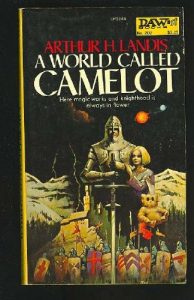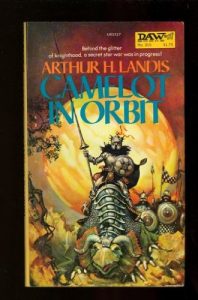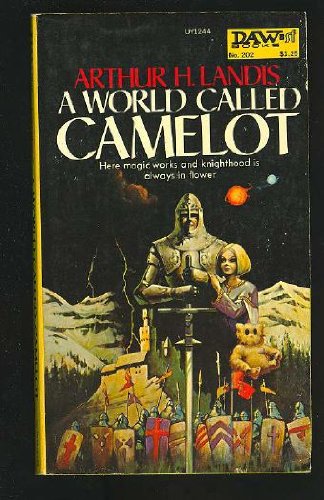 I was reminded of this book recently. I first read it three or four decades ago. So I looked on Amazon and it, with the sequels, were a penny each. This book was first published in 1965. If you have read Christopher Stasheff’s 1979 work The Warlock In Spite Of Himself you have read something with the same kernel of an idea. A “Galactic Adjuster” lands on a planet with a population of people who are more or less human except for minor details like the fur and the fact that magic works. The hero must rescue the Princess, save the day from the Evil Overlord and find himself truly Home for the first time.
I was reminded of this book recently. I first read it three or four decades ago. So I looked on Amazon and it, with the sequels, were a penny each. This book was first published in 1965. If you have read Christopher Stasheff’s 1979 work The Warlock In Spite Of Himself you have read something with the same kernel of an idea. A “Galactic Adjuster” lands on a planet with a population of people who are more or less human except for minor details like the fur and the fact that magic works. The hero must rescue the Princess, save the day from the Evil Overlord and find himself truly Home for the first time.
Where Stasheff did a humorous tongue in cheek take on the idea, Landis goes for the glorious swashbuckling romp. Derring-do is the order of the day and the hero, who is heavy gravity-world strong and an expert in all the local weapons due to sleep programming, fights the bad guys, negotiates with the truly strange aliens, and is used by the “teddy bear” other aliens.
 One thing, the science in this book is, shall we say, less than hard. It fails on many counts, such as the hero contemplating the expression of his princesse’s face when their child isn’t furred. The scientific explanation for how the magic works has more handwavium than most of us would prefer but, that is the greatest downfall of the series, the author plainly wasn’t any more scientifically aware than the inventors of the half Vulcan Spock who was created in the same era.
One thing, the science in this book is, shall we say, less than hard. It fails on many counts, such as the hero contemplating the expression of his princesse’s face when their child isn’t furred. The scientific explanation for how the magic works has more handwavium than most of us would prefer but, that is the greatest downfall of the series, the author plainly wasn’t any more scientifically aware than the inventors of the half Vulcan Spock who was created in the same era.
While not a serious work this book and its sequels, Camelot In Orbit and The Magic Of Camelot are a pleasant escape with glorious charges, magnificent castles and brilliant displays of blazonry. If you have been in the Society For Creative Anachronism, or enjoy epic fantasy, this book is probably right up your alley. If you enjoyed Stasheff’s Warlock series reading this and comparing the two is fascinating. If you haven’t read the Warlock series buy it and this one, then settle down for days of reading pleasure.




